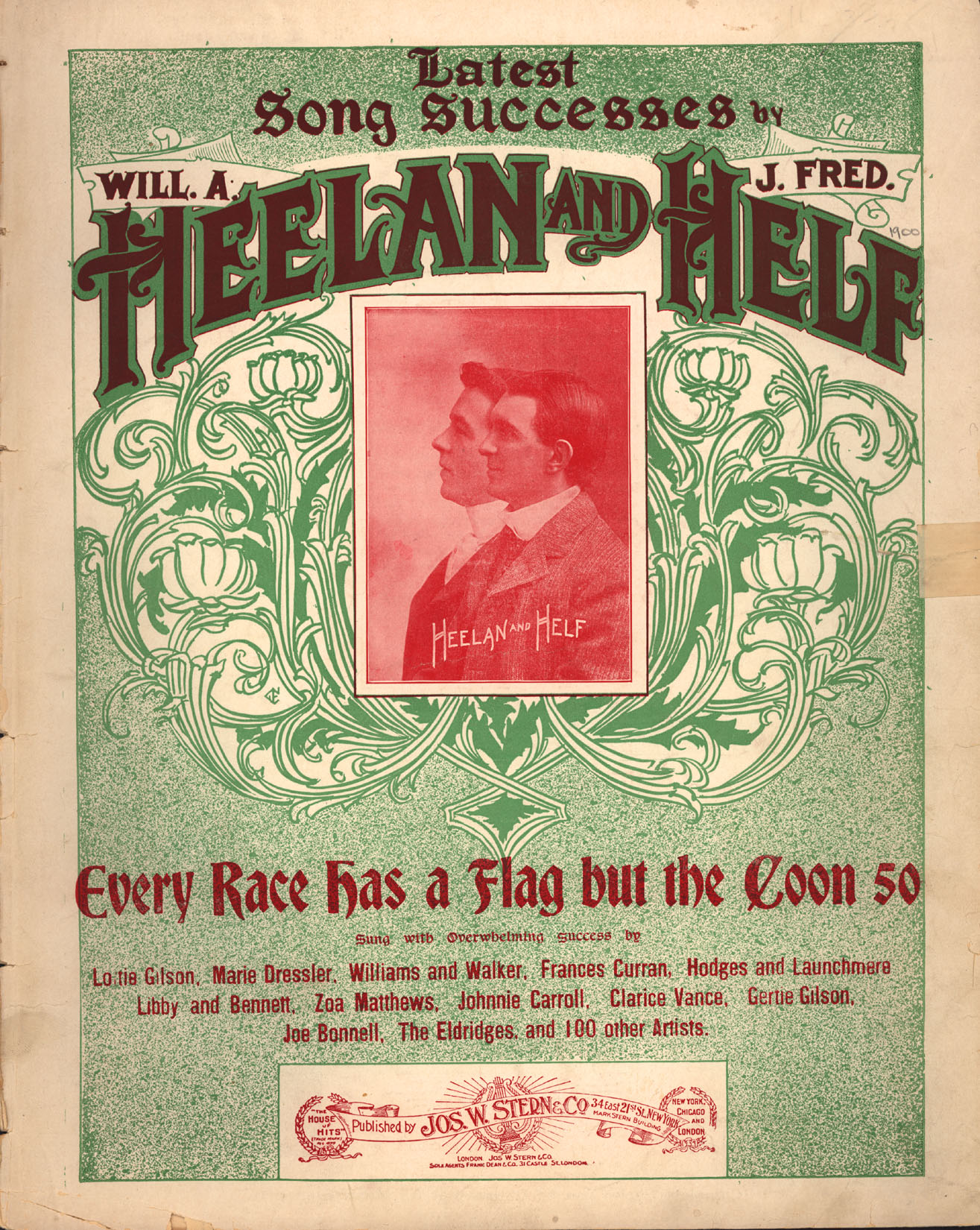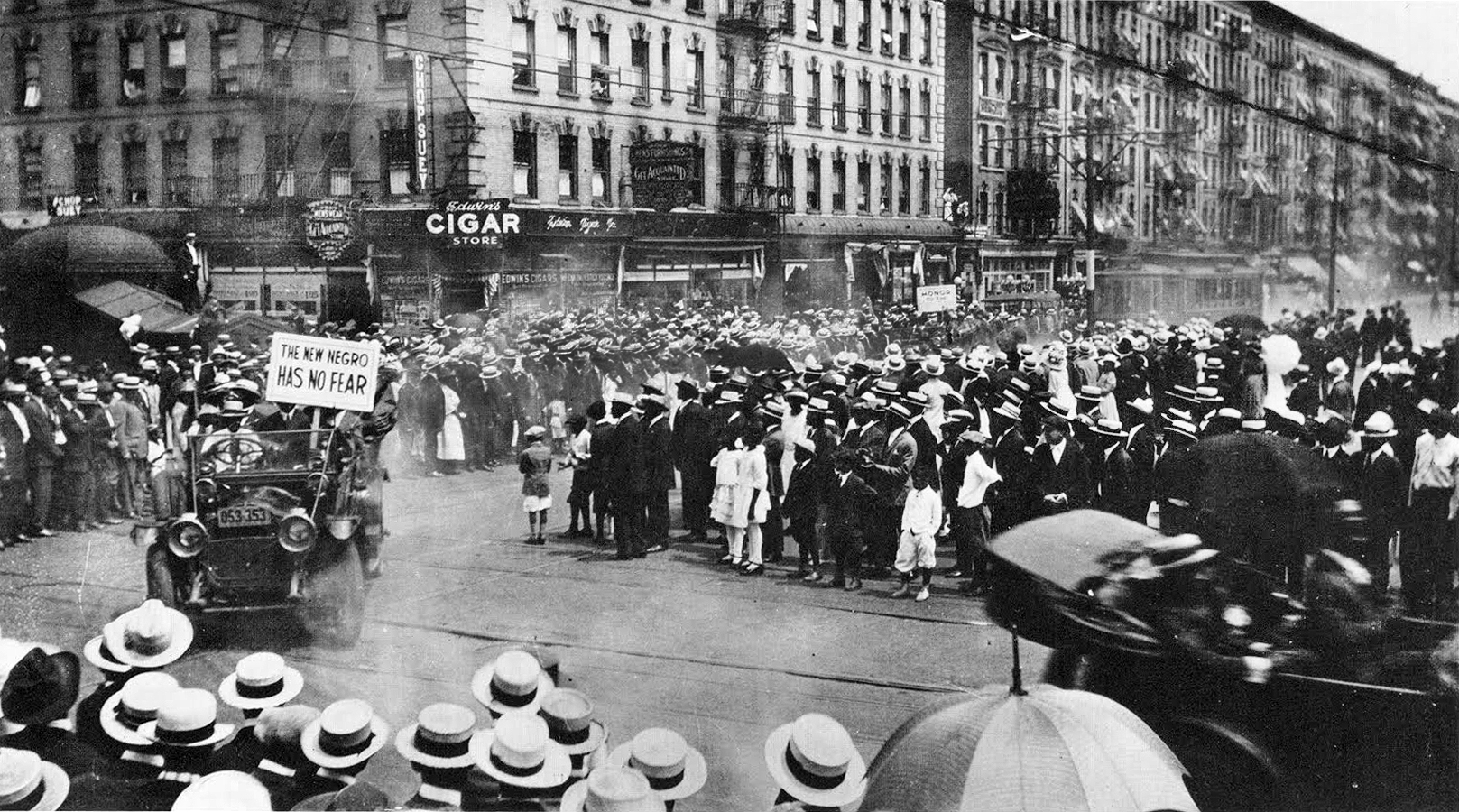|
Coon Song
Coon songs were a genre of music that presented a stereotype of black people. They were popular in the United States and Australia from around 1880 to 1920, though the earliest such songs date from minstrel shows as far back as 1848, when they were not yet identified with "coon" epithet. The genre became extremely popular, with white and black men giving performances in blackface and making recordings. Women known as coon shouters also gained popularity in the genre. Rise and fall from popularity Although the word "coon" is now regarded as racist, according to Stuart Flexner, "coon" was short for "raccoon", and it meant a frontier rustic (someone who may wear a coonskin cap) by 1832. By 1840 it also meant a Whig as the Whig Party was keen to be associated with rural white common people. At that time, "coon" was typically used to refer someone white, and a coon song referred to a Whig song. it was only in 1848 when the first clear case of using "coon" to refer to a black person ... [...More Info...] [...Related Items...] OR: [Wikipedia] [Google] [Baidu] |
Coon Coon Coon Sheet Music Cover 1901
Coon may refer to: Fauna Butterflies * Coon, common name of the butterfly ''Astictopterus jama'' * Coon, species group of the butterfly genus ''Atrophaneura'', now genus ''Losaria'' * Coon, common name of the butterfly '' Psolos fuligo'' Mammals * Coon, an alternative name for Maine Coon, a breed of domestic cat * Coon, a diminutive of raccoon People * Coon (surname) * Coön ( grc-gre, Κόων, links=no, ), a Trojan warrior who during the Trojan War wounded Agamemnon Arts and entertainment * " Coon 2: Hindsight", a 2010 episode of American animated series ''South Park'' * "The Coon", a 2009 episode of American animated series ''South Park'' * Coon Can or Conquian, a card game Slang * Coon, a racial slur, used pejoratively to refer to a dark-skinned person of African, Australian First Nations, or Pacific island heritage. * Coon Carnival, the original name for the Kaapse Klopse, a yearly minstrel festival in Cape Town, South Africa * Coon Chicken Inn, a former American ... [...More Info...] [...Related Items...] OR: [Wikipedia] [Google] [Baidu] |
Barracoon
A barracoon (a corruption of Portuguese ''barracão'', an augmentative form of the Catalan loanword ''barraca'' ('hut') through Spanish ''barracón'') is a type of barracks used historically for the internment of slaves or criminals. In the Atlantic slave trade, captured individuals were temporarily transported to and held at barracoons along the coast of West Africa, where they awaited transportation across the Atlantic Ocean. A barracoon simplified the slave trader's job of keeping the prospective slaves alive and in captivity, with the barracks being closely guarded and the captives being fed and allowed exercise. The barracoons varied in size and design, from small enclosures adjacent to the businesses of European traders to larger protected buildings. The amount of time slaves spent inside a barracoon depended primarily on two factors: their health and the availability of slave ships. Many captive slaves died in barracoons, some as a consequence of the hardships they expe ... [...More Info...] [...Related Items...] OR: [Wikipedia] [Google] [Baidu] |
Pan-African Flag
The Pan-African flag (also known as the Afro-American flag, Black Liberation flag, UNIA flag, and various other names) is a tri-color flag consisting of three equal horizontal bands of (from top down) red, black, and green. The Universal Negro Improvement Association and African Communities League (UNIA-ACL) formally adopted it on August 13, 1920, in Article 39 of the Declaration of the Rights of the Negro Peoples of the World, during its month-long convention at Madison Square Garden in New York City. Variations of the flag can and have been used in various countries and territories in the Americas to represent Garveyist ideologies. History The flag was created in 1920 by members of UNIA in response to the "coon song", a late nineteenth century craze for songs that belittle and mock African Americans and imitated of stereotyped AAVE speech, that became a hit around 1900 " Every Race Has a Flag but the Coon". This song has been cited as one of the three songs that "firmly e ... [...More Info...] [...Related Items...] OR: [Wikipedia] [Google] [Baidu] |
Universal Negro Improvement Association And African Communities League
The Universal Negro Improvement Association and African Communities League (UNIA-ACL) is a black nationalist fraternal organization founded by Marcus Garvey, a Jamaican immigrant to the United States, and Amy Ashwood Garvey. The Pan-African organization enjoyed its greatest strength in the 1920s, and was influential prior to Garvey's deportation to Jamaica in 1927. After that its prestige and influence declined, but it had a strong influence on African-American history and development. The UNIA was said to be "unquestionably, the most influential anticolonial organization in Jamaica prior to 1938," according to Honor Ford-Smith. The organization was founded to work for the advancement of people of African ancestry around the world. Its motto is "One God! One Aim! One Destiny!" and its slogan is "Africa for the Africans, at home and abroad!" The broad mission of the UNIA-ACL led to the establishment of numerous auxiliary components, among them the African Legion (a paramilitar ... [...More Info...] [...Related Items...] OR: [Wikipedia] [Google] [Baidu] |
Marcus Garvey
Marcus Mosiah Garvey Sr. (17 August 188710 June 1940) was a Jamaican political activist, publisher, journalist, entrepreneur, and orator. He was the founder and first President-General of the Universal Negro Improvement Association and African Communities League (UNIA-ACL, commonly known as UNIA), through which he declared himself Provisional President of Africa. Ideologically a black nationalist and Pan-Africanist, his ideas came to be known as Garveyism. Garvey was born into a moderately prosperous Afro-Jamaican family in Saint Ann's Bay and he was apprenticed into the print trade as a teenager. Working in Kingston, he got involved in trade unionism before he lived briefly in Costa Rica, Panama, and England. After he returned to Jamaica, he founded the UNIA in 1914. In 1916, he moved to the United States and established a UNIA branch in New York City's Harlem district. Emphasising unity between Africans and the African diaspora, he campaigned for an end to European colonial ... [...More Info...] [...Related Items...] OR: [Wikipedia] [Google] [Baidu] |




